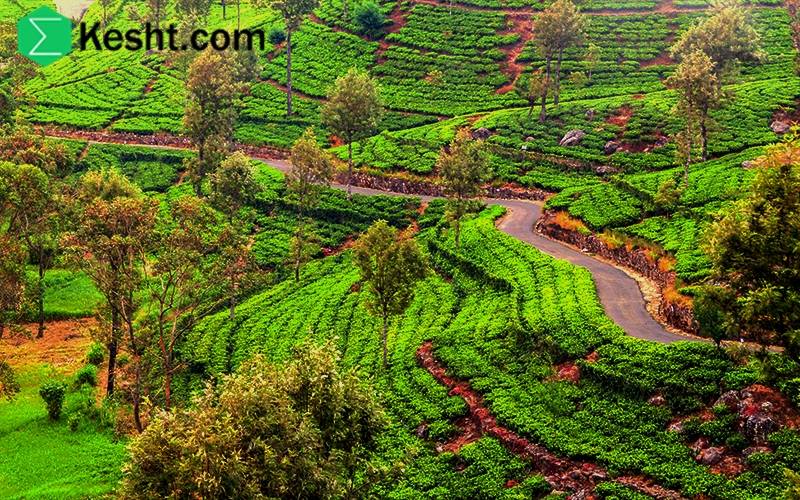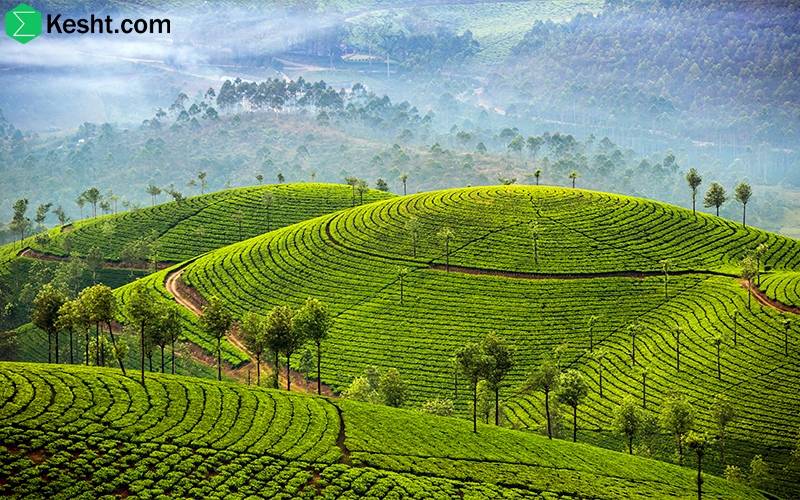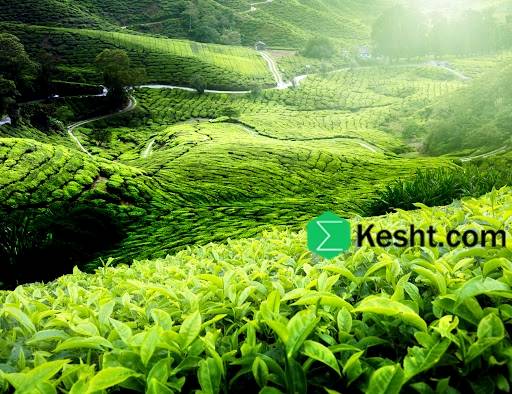### Tea Exports (Part Three)
#### What Actions Can Be Taken to Improve the Quality and Packaging of Iranian Tea?
To enhance the quality and packaging of Iranian tea, the following actions can be taken:
1. **Improving Cultivation and Harvesting Processes**
- **Use of Modern Agricultural Techniques**: Implement scientific and modern techniques such as organic farming and optimal water management.
- **Farmer Training**: Provide technical training to farmers to improve tea harvesting and processing methods.
2. **Quality Control**
- **National and International Standards**: Adhere to national and international quality standards to ensure product quality.
- **Microbiological and Chemical Testing**: Conduct regular tests to ensure the absence of contamination and compliance with maximum allowable compound limits.
3. **Appropriate Packaging**
- **Use of Quality Packaging**: Choose suitable packaging materials that prevent moisture and air infiltration.
- **Attractive Packaging Design**: Design appealing and informative packaging that effectively showcases the brand and quality of the product.
4. **Distribution and Sales System**
- **Establish an Organized Distribution Network**: Create effective distribution networks for easier access to domestic and foreign markets.
- **Online Sales**: Develop online sales platforms to increase access to international customers.
5. **Advertising and Marketing**
- **Effective Advertising**: Utilize modern advertising methods to promote Iranian tea in global markets.
- **Participation in Trade Shows**: Attend international trade shows to introduce Iranian tea to buyers and distributors.
6. **Research and Development**
- **Research on New Varieties**: Invest in research and development for producing new tea varieties and natural flavorings.
- **Improving Production Processes**: Optimize production and packaging processes to enhance efficiency and quality.
### Improving the Quality and Packaging of Iranian Tea
By implementing these actions, the quality and packaging of Iranian tea can be improved, thereby increasing its competitiveness in international markets.
#### Which Organizations Can Participate in Implementing These Plans?
Various organizations and entities can participate in the execution of plans to improve the quality and packaging of Iranian tea, including:
1. **Government Organizations**
- **Iranian National Standards Organization**: Responsible for setting and overseeing quality and packaging standards.
- **Ministry of Jihad Agriculture**: Involved in training farmers and promoting modern cultivation techniques.
- **Agricultural Research, Education, and Promotion Organization**: Provides research and studies on improving tea quality.
2. **Non-Governmental Organizations (NGOs)**
- **Environmental Organizations**: Promote organic and sustainable farming practices.
- **Food Industry Associations**: Offer advice and support regarding improvements in production and packaging processes.
3. **Private Companies**
- **Tea Producers**: As primary stakeholders, they can participate in the quality and packaging improvement processes.
- **Packaging Companies**: Provide innovative solutions for packaging and product design.
4. **Educational and Research Institutions**
- **Universities and Research Centers**: Conduct scientific research and provide technical training to farmers and producers.
- **National Agricultural Research Center**: Carry out studies and research focused on improving tea quality.
5. **International Organizations**
- **Food and Agriculture Organization (FAO)**: Provides advice and international support for agricultural development.
- **World Health Organization (WHO)**: Monitors the quality and safety of food products.
The collaboration of these organizations and entities can significantly enhance the quality and packaging of Iranian tea, leading to increased competitiveness in global markets.
### Current Challenges for Iran in Tea Exports
The current challenges for Iran in exporting tea include the following:
1. **Competition with Other Countries**
- **Intense Competition**: Major tea-producing countries like China, India, and Sri Lanka pose serious challenges for Iran’s tea exports due to their high-quality products and competitive prices. However, this challenge is mitigated by companies like Ikesht, a subsidiary of Samin Atlas, which has 15 years of experience in exports and strong links in countries such as Russia, Kazakhstan, Turkmenistan, and Iraq.
2. **Quality Issues**
- **Non-Compliance with Standards**: Some producers may fail to meet national and international quality standards, negatively impacting the reputation of Iranian tea. Ikesht ensures adherence to international standards and rigorous quality control, providing peace of mind for both domestic and foreign buyers.
3. **Inadequate Packaging**
- **Unattractive Packaging**: Poor packaging and lack of appealing designs can reduce product attractiveness in global markets. Our company offers specialized packaging with a reputable international brand, ensuring high quality and aesthetic appeal at a continental level. For more information about our packaging, click (link).
4. **Inefficient Distribution System**
- **Lack of Distribution Infrastructure**: An inefficient distribution system and the absence of effective distribution networks can lead to delays in meeting market demands.
5. **Economic Issues and Sanctions**
- **Economic Sanctions**: Sanctions can negatively affect the export process and limit access to international markets.
6. **Low Awareness of Target Markets**
- **Lack of Market Knowledge**: Many Iranian producers lack sufficient awareness of the needs and preferences of target markets, which can lead to unsuccessful export efforts.
7. **Financial and Investment Challenges**
- **Insufficient Investment**: A lack of adequate investment in the tea industry for quality improvement, research and development, and marketing can be a fundamental challenge.
Addressing these challenges requires collaboration among government sectors, private entities, and international organizations to improve the status of Iranian tea exports.
### Actions to Increase Awareness of Target Markets for Iranian Tea
To enhance awareness of target markets for Iranian tea, the following actions can be effective:
1. **Market Research**
- **Market Analysis**: Conduct comprehensive research to identify the needs, preferences, and consumption patterns of consumers in target markets.
- **Competitor Analysis**: Analyze competitors and similar products in target markets to understand strengths and weaknesses.
2. **Training and Consultation**
- **Workshops**: Organize workshops and seminars for tea producers and exporters regarding target markets.
- **Specialized Consulting**: Provide expert advice on market entry strategies and marketing.
3. **Establishing Business Networks**
- **Developing Communication Networks**: Create and strengthen connections with distributors, buyers, and representatives in target markets.
- **Participating in Trade Shows**: Attend international trade fairs to familiarize with buyers and markets.
4. **Utilizing Information Technology**
- **Digital Platforms**: Use online platforms to collect and analyze market information and customer needs.
- **Specialized Websites**: Launch specialized websites and blogs focused on tea and target markets.
5. **Advertising and Marketing**
- **Targeted Advertising Campaigns**: Initiate targeted advertising campaigns to introduce Iranian tea in target markets.
- **Content Creation**: Develop educational and informative content about the features and benefits of Iranian tea.
6. **Collaboration with International Organizations**
- **Partnerships with Organizations**: Collaborate with international organizations to exchange information and experiences related to exports and marketing.
- **Utilizing Government Support**: Take advantage of government support programs aimed at promoting exports.
Implementing these actions can help increase awareness of target markets for Iranian tea, ultimately leading to improved export status and success in international markets.
### Trends in the Tea Export Market
The trends in the tea export market generally include the following stages and factors:
1. **Production and Cultivation**
- **Cultivation Development**: Improving agricultural methods and cultivating tea plants, focusing on quality and diversity of tea types.
- **Utilization of Technology**: Employing modern technologies in cultivation and harvesting to enhance productivity and quality.
2. **Processing and Packaging**
- **Improving Production Processes**: Optimizing production and processing methods to maintain quality.
- **Appropriate Packaging**: Using attractive and durable packaging that preserves product quality.
3. **Market Research**
- **Demand Analysis**: Examining the needs and preferences of consumers in target markets.
- **Competitor Identification**: Understanding competitors and analyzing their products to identify strengths and weaknesses.
4. **Marketing Strategies**
- **Targeted Advertising**: Launching advertising campaigns to promote Iranian tea.
- **Participation in Trade Shows**: Attending international trade fairs to establish connections with buyers.
5. **Distribution System**
- **Developing Distribution Networks**: Creating and strengthening distribution networks for easier access to target markets.
- **Online Sales**: Utilizing online platforms for selling and distributing tea.
6. **Analysis and Evaluation**
- **Market Feedback**: Collecting feedback from customers and buyers to improve products and services.
- **Performance Evaluation**: Reviewing export performance and analyzing data to identify strengths and weaknesses.
7. **Challenges and Opportunities**
- **Identifying Challenges**: Analyzing existing challenges in the export market, such as competition, sanctions, and economic issues.
- **Leveraging Opportunities**: Identifying opportunities for market development and increasing exports.
The trends in the tea export market require attention to quality, effective marketing, and the establishment of efficient distribution networks. By implementing these stages and focusing on challenges and opportunities, the export of Iranian tea can be enhanced.
### Advantages of Iran in Transportation Routes for Tea Exports
Iran has several advantages in transportation routes for tea exports compared to other countries:
1. **Strategic Geographical Location**
- **Shared Borders**: Iran shares borders with several countries, including Turkey, Iraq, Afghanistan, and Pakistan, which can facilitate exports to these markets.
- **Access to Sea**: Iran has access to the Persian Gulf and the Caspian Sea, providing opportunities for maritime transport to neighboring countries and beyond.
2. **Transportation Infrastructure**
- **Rail and Road Networks**: The development of rail and road networks can facilitate domestic transportation and exports. Rail lines are particularly effective for transporting heavy cargo.
- **International Airports**: The presence of international airports in major cities like Tehran, Shiraz, and Isfahan enables faster air transport.
3. **Diverse Transportation Methods**
- **Combined Transport**: The ability to use combined transport (land, sea, and air) allows producers to choose the most efficient and cost-effective method for exports.
- **Port Development**: Major ports such as Bandar Abbas and Imam Khomeini Port have high capacities for maritime transport.
4. **Reduced Transportation Costs**
- **Relatively Low Costs**: Due to adequate infrastructure and competition in the transport market, transportation costs in Iran can be lower than in some other countries.
5. **International Projects**
- **New Silk Road Initiatives**: Participation in international projects like the “Belt and Road Initiative,” which aids in the development of transportation infrastructure and facilitates trade.
These advantages can help Iran be recognized as an important center for tea exports and other agricultural products in the region, creating more opportunities for access to global markets.
### Comparison of Transportation Infrastructure Between Iran and Turkey for Tea Exports
The comparison of transportation infrastructure between Iran and Turkey regarding tea exports includes the following points:
1. **Geographical Location**
- **Iran**: Shares borders with multiple countries and has access to the Persian Gulf and the Caspian Sea.
- **Turkey**: Acts as a bridge between Europe and Asia, with access to the Mediterranean Sea, the Black Sea, and the Aegean Sea.
2. **Road Transportation Network**
- **Iran**: A vast and developing road network that facilitates internal transport and exports to neighboring countries.
- **Turkey**: A more advanced and improved road network with better facilities and greater safety.
3. **Rail Network**
- **Iran**: An expanding rail network, but less developed compared to Turkey. Rail transport can be a suitable option for heavy cargo.
- **Turkey**: Has a modern and efficient rail network that moves goods quickly and optimally.
4. **Maritime Transportation**
- **Iran**: Key ports such as Bandar Abbas and Imam Khomeini Port have high capacities for maritime transport.
- **Turkey**: Advanced ports like Istanbul and Izmir, which are among the most important maritime transport centers in the region.
5. **Air Transportation**
- **Iran**: International airports in major cities exist, but the number and quality of services may be more limited.
- **Turkey**: Modern and large airports, including Istanbul Airport, recognized as one of the busiest airports in the world.
6. **Development and Planning**
- **Iran**: Currently implementing transportation infrastructure development projects but requires more investment.
- **Turkey**: Strong developmental programs and significant investments in transportation infrastructure, especially in rail and road sectors.
Overall, Turkey has more advanced and efficient transportation infrastructure that can facilitate tea exports and other products. While Iran has advantages such as a strategic geographical location, it needs investment and infrastructure improvements to compete more successfully with Turkey and other countries.




